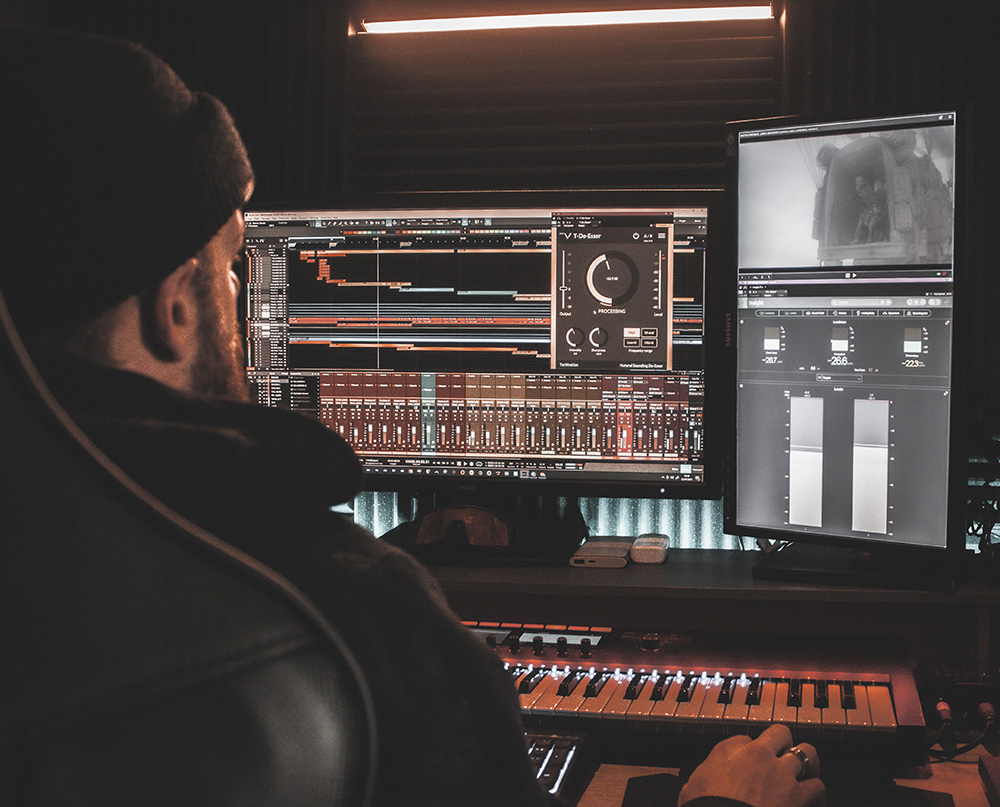One of the factors that contribute to the fact that mastering is an art form is the fact that each mastering engineer has their own approach to the mastering process. Having said that, you must have a thorough understanding of the many principles underlying the process of mastering if you wish to communicate effectively within the music industry. In this post, We will define Stem Mastering and go over the steps that beginners can take to start their very own stem mastering sessions in today’s class.
We’ll also look at the situations in which a sound engineer might choose to use stem mastering rather than the more typical final mix mastering technique. Let’s start the party now and not wait any longer!
What does “Stem Mastering” actually mean?
Stem mastering is the process of mastering music using many stems as opposed to a single stereo file or the entire song mix. An alternative to conventional mastering is stem mastering. Your master channel may be divided into individual stem tracks during stem mastering. As a result, each stem would go through its own level of processing.
Stems are made up of numerous unique parts that are grouped hierarchically. This is the reason why you might have all of the lead vocals in a single stem, or the kick, snare, and hi-hat sounds in a single file on a drum stem.
What Differentiates Stem Mastering from Stereo Mastering?
Stem mastering and stereo mastering differ primarily in that the latter also involves mastering the finished stereo mix. Stem mastering is applied to distinct tracks. Multiple stems, which the mixing engineer provides, are necessary for stem mastering to be completed. To put it another way, the main difference between the two types is the use of stems as opposed to multitrack. In contrast to stem mastering, which balances mixed stem files, stereo mastering balances a single stereo mix of multi-tracks.
Although the vast majority of track balance concerns should ideally be fixed during the mixing session, the stem mastering paradigm gives mastering pros a greater degree of control over the overall balance of the track. You should refrain from making large changes to a song’s sound while stem mastering because these changes should be saved for the mixing session. One of the main goals of a stem mastering session, which is similar to the goals of a standard mastering session, is to improve the quality of the final mix, or in this case, the mixes of a piece of music.
A Mastering Engineer will undoubtedly gain expertise in both stereo mastering and stem mastering throughout the course of his or her career. Each piece of music calls for a different set of tactics. To become a song’s master, there is no one right method. Instead, a significant portion of it will depend on the needs of the sound itself.
How does Stem Managing Function?
Stem Mastering process is considerably different from the mixing method. The method of stem mastering and stereo mastering are nearly identical, with the distinction that stems mastering calls for the use of multiple files while stereo mastering simply needs a single stereo file.
There is a whole step devoted to mixing before even starting the mastering process. An engineer often has more creative freedom during the mixing stage because this is where the song’s true balance is determined. In order to create the best balanced stereo file (or stems, in the case of stem mastering), an engineer must first determine the relative volume of each track, add audio effects, then mix the tracks together.
Mixing engineers are in one place mentally, and mastering engineers are in a whole different place. A mastering engineer’s role is to elevate the artistic decisions made during the mixing stage, which essentially controls how the various musical elements of a song are performed in relation to one another. The mastering engineer is also responsible for providing all necessary music deliverables for playing devices and for considering how stem or stereo mastering of a song will affect the project as a whole. The final stage of music production is referred to as stem mastering or stereo mastering, depending on who is doing it.
Stem-Based Instruction Approach
The stem mastering approach and the normal mastering method are very similar to one another. You’ll observe that the main point of distinction between the two is the starting place. Stem mastering starts with each of the track’s individual stems as opposed to the one file that traditional mastering starts with. The procedure’s following stage is very similar to the one that came before it.
Some of the common techniques used by mastering specialists in a mastering chain include gain staging, EQ clean-up, compression, stereo imaging, gain reduction, limiting, and metering. Professional mastering engineers can also enhance the mix’s tonal quality by using particular plugins. For instance, an analog tape plugin can be used to provide a small amount of appropriate harmonic distortion.
Depending on the option selected, the mastering engineer will provide all necessary files to an artist’s team or directly to the artist after a master has been inspected and tested for the proper frequency response on a variety of playback devices. It is crucial for mastering engineers to have in-depth knowledge of both traditional mastering and stem mastering because they are involved in the very final stage of the audio production process.
When Should You Use Stems While Mastering?
A request to use stems for mastering can be made by an engineer who feels that doing so will provide them more creative freedom than working with a single stereo file. This might be done in order to highlight a specific area of the music, address issues with the overall mix, or satisfy personal preferences regarding the song’s balance.


Leave a Reply